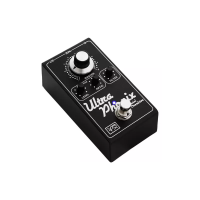-3-
ma que reemplaza.
Presión peligrosa. Para evitar
posibles lesiones graves o fatales y/o daños al equi-
po, la presión del sistema debe ser inferior a
7 kg/cm
2
(100 PSI). Si no se observa esta instruc-
ción, existe el riesgo de que el tanque explote.
Si es posible que la presión de descarga del sistema
sobrepase las presiones indicadas, instale una vál-
vula de alivio capaz de manejar el volumen total de
la bomba a las presiones indicadas.
Presión peligrosa. Lea el manual
del propietario antes de tratar de instalar, operar o
reparar este tanque. Para evitar una posible falla
del equipo, lesiones graves y/o daños materiales, no
permita que la bomba, el tanque o el sistema de tu-
berías se congelen.
INFORMACIÓN GENERAL
Todos los tanques vienen de la fábrica precargados
con aire. Cuando instale el tanque, ajuste esta pre-
carga a 2 PSI por debajo de la presión de arranque de
la bomba. Para hacerlo, libere o agregue aire por la
válvula en la parte superior del tanque.
AVISO: ¡Transporte e instale el tanque SÓLO en
posición vercal!
AVISO: Siempre congure la precarga antes de en-
cender la bomba y SIN AGUA en el tanque.
Verique la presión de aire de su tanque frecuen-
temente con un manómetro para neumácos ade-
cuado y ajústela de ser necesario hasta que se haya
alcanzado la presión correcta. Para las graduaciones
correctas de presión de precarga, consulte la tabla 1
debajo (o la equeta del tanque).
Precarga del tanque para usar en sistemas de
Velocidad Variable.
Congure la precarga del tanque de presión al 70%
de la presión de operación del sistema o lo que el
manual de la bomba de velocidad variable indique.
Nota: Siempre verique y calibre la presión de pre-
carga del tanque teniendo la bomba apagada y el tan-
que SIN AGUA (CERO presión en el sistema).
Interruptor de Presión
(Pressure switch seng)
Precarga del tanque
(Tank precharge)
1.4-2.8 kg/cm
2
(20-40 PSI) 1.26 kg/cm
2
(18 PSI)
2.1-3.5 kg/cm
2
(30-50 PSI) 1.97 kg/cm
2
(28 PSI)
2.8-4.2 kg/cm
2
(40-60 PSI) 2.67 kg/cm
2
(38 PSI)
Tabla 1 (Table 1)
instrucon can result in tank blowup. If system dis-
charge pressure can exceed listed pressures, install
a relief valve capable of passing the full pump vol-
ume at listed pressures.
Hazardous pressure. Read owner’s
manual before aempng to install, operate, or ser-
vice this tank. To avoid possible equipment failure,
severe injury, and property damage, do not allow
pump, tank, or piping system to freeze.
GENERAL INFORMATION
All tanks are factory pre-charged with air. When in-
stalling tank, adjust pre-charge to 2 PSI below pump
cut-in pressure seng. To do this, bleed or add air
through valve on top of tank.
NOTICE: Transport and install tank in vercal posion
ONLY!
NOTICE: Always set pre-charge with NO WATER in
tank.
Check pressure frequently with an accurate re pres-
sure gauge unl correct pressure has been reached.
For correct pre-charge pressure sengs, see Table 1
below on the le.
Tank precharge for use in Variable Frequency Drive
systems.
Set the pressure tank precharge to 70% of the sys-
tem’s operang pressure or as indicated in the vari-
able speed pump owner’s manual.
Note: Always check tank’s air pressure with the pump
o and the tank WITHOUT WATER (ZERO pressure in
the system).
NOTICE: Replace and ghten air valve cap if it is re-
moved for any reason. Failure to replace air cap may
allow loss of air pressure and eventually lead to tank
waterlogging and water cell (bladder) failure.
Installaons with mulple tanks
Two or more pre-charged tanks can be connected
together to increase the amount of usable water
between cycles (drawdown). Two tanks of the same
size will provide twice the supply, three will triple the
supply, and so on. See Fig. 1 for a typical installaon
of this kind.
OPERATING CYCLE
1. Tank nearly empty – air expands lling area above
vinyl water cell (Fig. 2A).
2. Water begins to enter tank – air is compressed
above water cell as it lls with water (Fig. 2B).
3. Pump-up cycle completed – air now compressed
to cut o seng of pressure switch (Fig. 2C).
4. Water being drawn from tank – compressed tank

